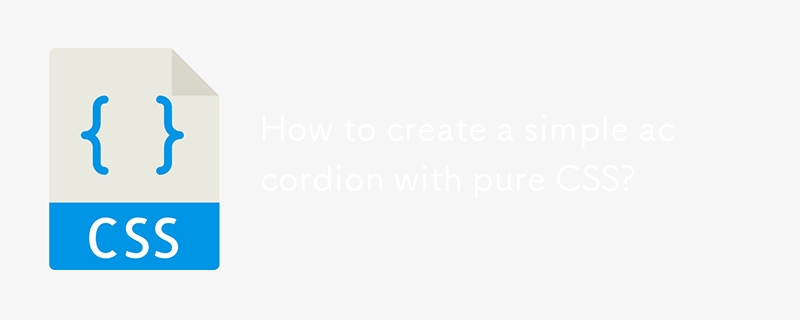Found a total of 10000 related content

Building a Mortgage Calculator: An Educational Project
Article Introduction:Introduction
To enhance my programming abilities, I recently completed a mortgage calculator project as part of Codecademy's Computer Science course. This project, focusing on Python fundamentals and problem-solving, was a valuable learning experien
2025-01-28
comment 0
399

How to Call `.js` File Functions Synchronously?
Article Introduction:Synchronous Script Injection Using document.createElement("script")When attempting to call a .js file synchronously and use its functions...
2024-11-02
comment 0
1117

Js in bits - cript)
Article Introduction:Learning js should be fun. It's fun if it's easy.
I tried my best in writing this, to understand it easily.
To write js in html, we can use script tag.
Other ways to use script tag
1, Write javascript in a .js file and link it with s
2024-12-29
comment 0
932

How to Parse and Execute JavaScript Code in C#?
Article Introduction:Parse and Execute JS in CTo answer the question title "How to parse and execute JS in C#", here is piece of code that wraps the Windows Script...
2024-12-28
comment 0
905

How to reference js file with vue.js
Article Introduction:There are three ways to refer to JS files in Vue.js: directly specify the path using the <script> tag;; dynamic import using the mounted() lifecycle hook; and importing through the Vuex state management library.
2025-04-07
comment 0
502

Can I write JS code in H5?
Article Introduction:Of course, it's as easy as eating with a spoon. H5 provides an environment, and JS is like an actor performing various dynamic effects on the stage. Use the <script> tag to write JS code to H5 and can be optimized through external files, modularity, asynchronous loading and code compression techniques. It is necessary to pay attention to potential issues such as browser compatibility and error handling to ensure the smooth execution of JS code.
2025-04-06
comment 0
579

Advanced H5 Performance Optimization Strategies
Article Introduction:The key to H5 page performance optimization is to improve loading speed and user experience. 1. Reduce the amount of resources loaded on the first screen, compress pictures, merge script styles, use lazy loading and on-demand introduction; 2. Use the caching mechanism to improve the secondary access speed through Cache-Control, ETag and ServiceWorker; 3. Optimize the rendering process, use the skeleton screen, avoid inline script blocking, and perform JS tasks in segments; 4. Use asynchronous loading and preloading reasonably, such as lazy image loading, interface pre-request and static resource pre-loading, so as to achieve faster and smoother page display.
2025-07-22
comment 0
573

Preloading Resources for Performance using HTML5 Preload Hint
Article Introduction:preload improves web page speed by loading key resources in advance, suitable for core files on the first screen. ① Used to prioritize the loading of key CSS, JS, fonts, images, etc.; ② Use the as attribute correctly to specify resource types such as script, style, font, and image; ③ Pay attention to avoid duplicate loading, testing loading timelines, and handling cross-domain and compatibility issues.
2025-07-11
comment 0
194

'Heur:Exploit.Script.Generic' warning from Edge
Article Introduction:"Heur:Exploit.Script.Generic" is a suspicious script prompt detected by Edge browser based on Microsoft's DefenderSmartScreen, which is not confirmed to be poisoned; 1. It may come from malicious JS scripts, third-party advertisements or hacked websites embedded in the webpage; 2. When encountering warnings, you should prioritize the page, or try to refresh, change the browser, check the URL, and run an anti-virus scan; 3. Administrators need to troubleshoot the source of the script and third-party services; 4. Most of the cases are suspected threats, and the behavior is similar to attacks but may not be real and harmful; 5. You can reduce warnings by updating the browser, disabling redundant extensions, using ad blocking, and avoiding unknown links.
2025-07-12
comment 0
160

How to add JavaScript to HTML?
Article Introduction:In web development, there are three common ways to add JavaScript to HTML: inline scripts, internal script blocks, and external files. 1. Inline scripts directly write JS in the event attributes of HTML tags, such as onclick, which is suitable for small functions but is not conducive to maintenance; 2. Internal scripts write code in tags, usually placed at the bottom to optimize loading performance; 3. External scripts introduce .js files through src attributes, which are clear structure, reusable and conducive to caching. This is the most recommended practice. Pay attention to the correct path and dependency order. The selection method should be based on project requirements, and external scripts are usually recommended.
2025-07-17
comment 0
126

JavaScript Service Workers for Offline Capabilities and Caching
Article Introduction:ServiceWorkers is a key tool for implementing offline functions and caches of web pages. It runs in the browser background, is independent of the main thread, can intercept network requests and manage caches, and is the core technology for building PWA. 1. ServiceWorker is a background script that does not operate the DOM directly. It supports push notifications, background synchronization and other functions. It only runs in the HTTPS environment (except for the development environment). Its life cycle includes the registration, installation and activation stages. 2. To register a ServiceWorker, you need to call the register method in the main JS file, specify the script path and listen to the registration results. 3. Use CacheAPI to cache key resources during the installation phase and return first in fetch events
2025-07-18
comment 0
504

How to link a JavaScript file to an HTML5 document?
Article Introduction:The way to introduce JavaScript files in HTML5 is to use tags and specify the src attribute. 1. The basic syntax is; 2. It is recommended to place it at the end to avoid blocking page rendering; 3. If placed, you can use the defer or async attribute to load asynchronously, where defer ensures that the script is executed after HTML parsing is completed, and async will be executed immediately after downloading and no order is guaranteed; 4. The paths must be accurate, and the relative paths such as "js/main.js" or the direct file name "main.js"; 5. Multiple JS files can be introduced through multiple tags, and pay attention to the dependency order to ensure that the dependent library is loaded first; 6. In actual development, pay attention to path errors and loading order issues to avoid console errors or functional abnormalities.
2025-06-27
comment 0
836

A crucial JS roundup on preventing common security vulnerabilities like XSS
Article Introduction:XSS prevention requires three aspects: input filtering, output coding and CSP. 1. Input filtering: HTML escapes the user input content, use the whitelist mechanism to process rich text, prohibit dangerous tags, and check them simultaneously on the front and back ends; 2. Output encoding: Process according to the difference in output location, HTML content is escaped with entity, attribute restriction type, JS string is escaped accordingly, and URL parameters are handled with encodeURIComponent; 3. CSP settings: Restrict script sources through HTTP response header Content-Security-Policy, disable inline scripts, and use event listeners instead as the last line of security defense.
2025-07-01
comment 0
782

HTML `link` for Preloading Critical Resources
Article Introduction:Preloading key resources can optimize web page performance and load key resources on the first screen in advance. Rel="preload" should be used to preload resources that are crucial for first-screen rendering, such as key CSS, JS, fonts, first-screen pictures, etc.; correctly set the as attribute to match resource types such as as="style", as="script", as="font", etc., and it is recommended to add type attributes to ensure format compatibility; when preloading fonts, you must add crossorigin attributes to ensure correct loading and cache; avoid abuse of preloading, use only for critical resources, and prevent affecting other request priorities.
2025-07-21
comment 0
941

How to create a simple accordion with pure CSS?
Article Introduction:Using pure CSS to achieve the accordion effect can be completed through HTML and tags. The specific steps are as follows: 1. Use and tags to achieve the expansion and collapse function, with clear semantics and support barrier-free access; 2. Set details borders, inner margins and other styles through CSS to unify the appearance, and hide the default arrows; 3. Note that multiple panels cannot be expanded at the same time through pure CSS restrictions, so JavaScript needs to be introduced to implement this function. In summary, basic functions do not require JS, but complex interactions still require script support.
2025-07-23
comment 0
636

Mastering the Command Line for JavaScript Developers
Article Introduction:Master basic but in-depth command line skills: proficient in using Tab completion, history, Ctrl R search, pwd positioning and ls-la to view hidden files; 2. Efficiently use Node.js and package manager: make good use of npminit-y, --save-dev, npx without installation and operation, npmrun scripts and outdated inspection, and optimize pnpm speed up; 3. Accurate search code and log: combine grep-r/-i, find files, jq formatted JSON and xargs to find JS files with specific content; 4. Write simple script automation tasks: such as deploy.sh one-click deployment, chmod x grant execution rights; 5. Custom Sh
2025-07-24
comment 0
472


















